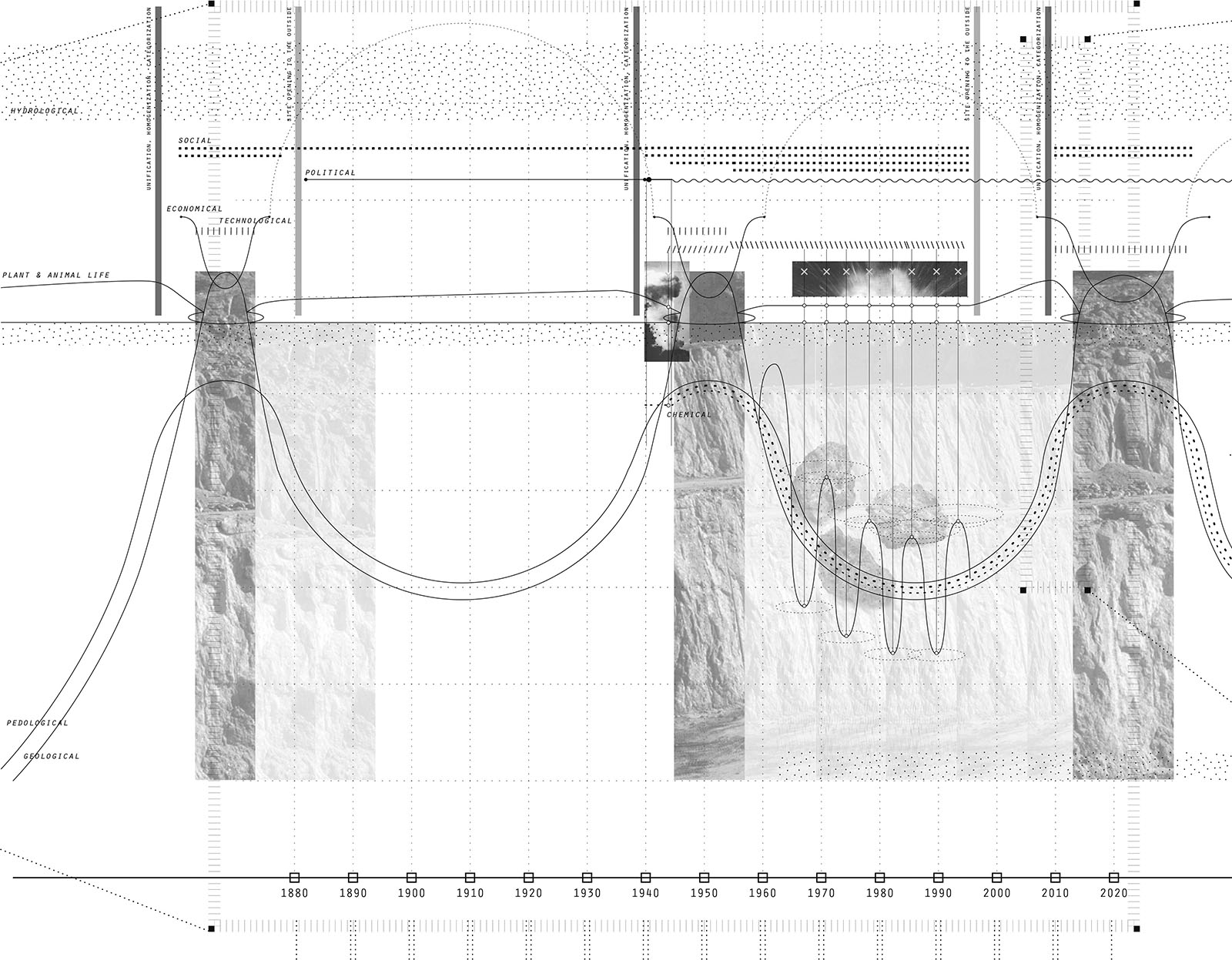Downloads
DOI:
https://doi.org/10.7480/spool.2016.2.1111Abstract
In an age when it is becoming increasingly apparent that disturbed sites (or any other sites for that matter) can never be fully managed, nor can their future development be entirely predetermined, this paper looks at disturbed sites’ landscape as a complex and metastable system. While it deals with disturbed sites in particular, more broadly it aims to encourage a general re-examination of landscape design that relies on the world in harmonious balance and the experience of visual pleasure, which, according to long-established structures, may please or offer timeless experiences but in most cases hold little power and no potential to change, enhance or diminish (our own) bodily capacities to act – to stimulate thought, influence ideas, judgements and desires.
In order to explore ways of moving away from the desire for a stable portrayal of ‘the natural’ that often motivates disturbed sites’ immediate ecological remediation and later programmatic transformation, the paper firstly, in order to clarify the understanding of the proposed alternative, imagines landscapes where such an approach is driven to extreme. Next, it places focus on the concept of territory and through the processes behind territory-making argues for a rethinking of the common ways of reading, intervening in and representing complex (in this case disturbed) sites. Alongside this, it proposes a reinterpretation of the notion of place, presents an alternative search for ‘the specific’ and questions what could specificity, once cleared of any ‘essence’, actually stand for.
Ideas and concepts developed throughout this paper begin with writings on territory by Deleuze and Guattari on one side, with further elaborations by Bogue, Brighenti, Grosz, and others. On the other side, ideas of post-humanism and new materialism provide a new view on disturbed sites to broaden the conception of territory as a relational, process-driven and open-ended mode of organization. They are accompanied by diagrammatic mappings that describe and analyse a very particular place – Fort de Vaujours, an abandoned uranium-contaminated site near Paris.
How to Cite
Published
License
Copyright (c) 2020 SPOOL

This work is licensed under a Creative Commons Attribution 4.0 International License.

References
Barnett, R. (2013). Emergence in Landscape Architecture. London, United Kingdom & New York, NY: Routledge.
Bogue, R. (2003). Deleuze on Music, Painting, and the Arts (pp. 55-76). New York, NY: Routledge.
Brighenti, A. (2010). On Territorology: Towards a General Science of Territory. Theory, Culture & Society, 27(1), 52-72.
Deleuze, G. & Guattari, F. (1987). A thousand plateaus. trans. Brian Massumi. Minneapolis, MN: University of Minnesota Press.
Grosz, E. (2013). Identity and Individuation: Some Feminist Reflections. In A. De Boever, Gilbert Simondon: Being and Technology (1st ed., pp. 37-56). Edinburgh, United Kingdom: Edinburgh University Press.
Hiller, J. & Abrahams, G. (2014). Deleuze and Guattari: Jean Hillier in Conversation with Gareth Abrahams, Exploring Foundations for Planning Theory. Groningen, Netherlands: InPlanning.
Massey, D. (1994). Space, place, and gender (pp. 146-156). Minneapolis, MN: University of Minnesota Press.
O’Sullivan, S. (2001). The aesthetics of affect: Thinking art beyond representation. CANG, 6(3), 125-135. doi:10.1080/09697250120087987
O’Sullivan, S. (2006). Art encounters Deleuze and Guattari (pp. 38-69). Basingstoke, United Kingdom: Palgrave Macmillan.
Raxworthy, J. (1997). Specificity: the impossibility of not projecting. Landscape Review, 3(2), 43-50.
Wise, J. (2000). Home: Territory and Identity. Cultural Studies, 14(2), 295-310. doi:10.1080/095023800334896



